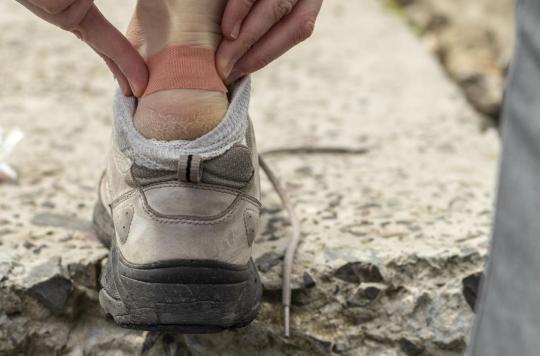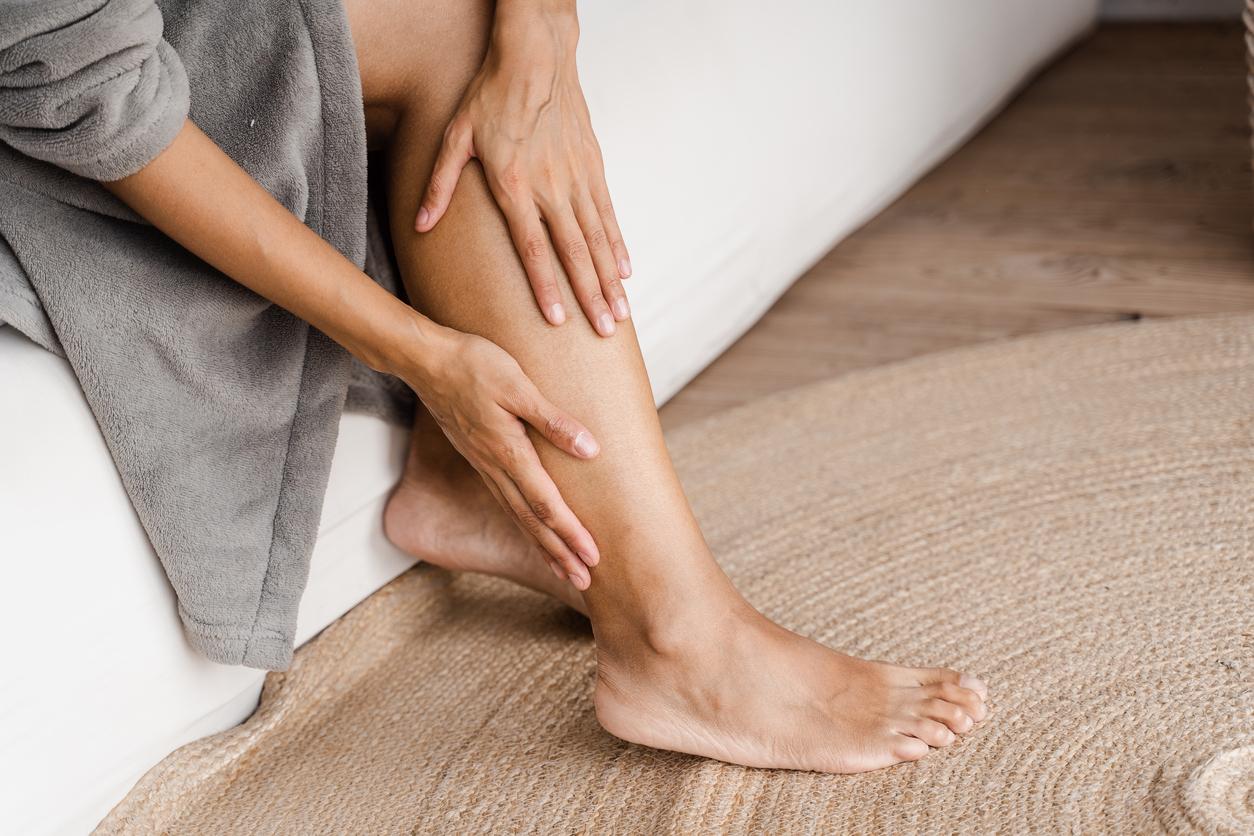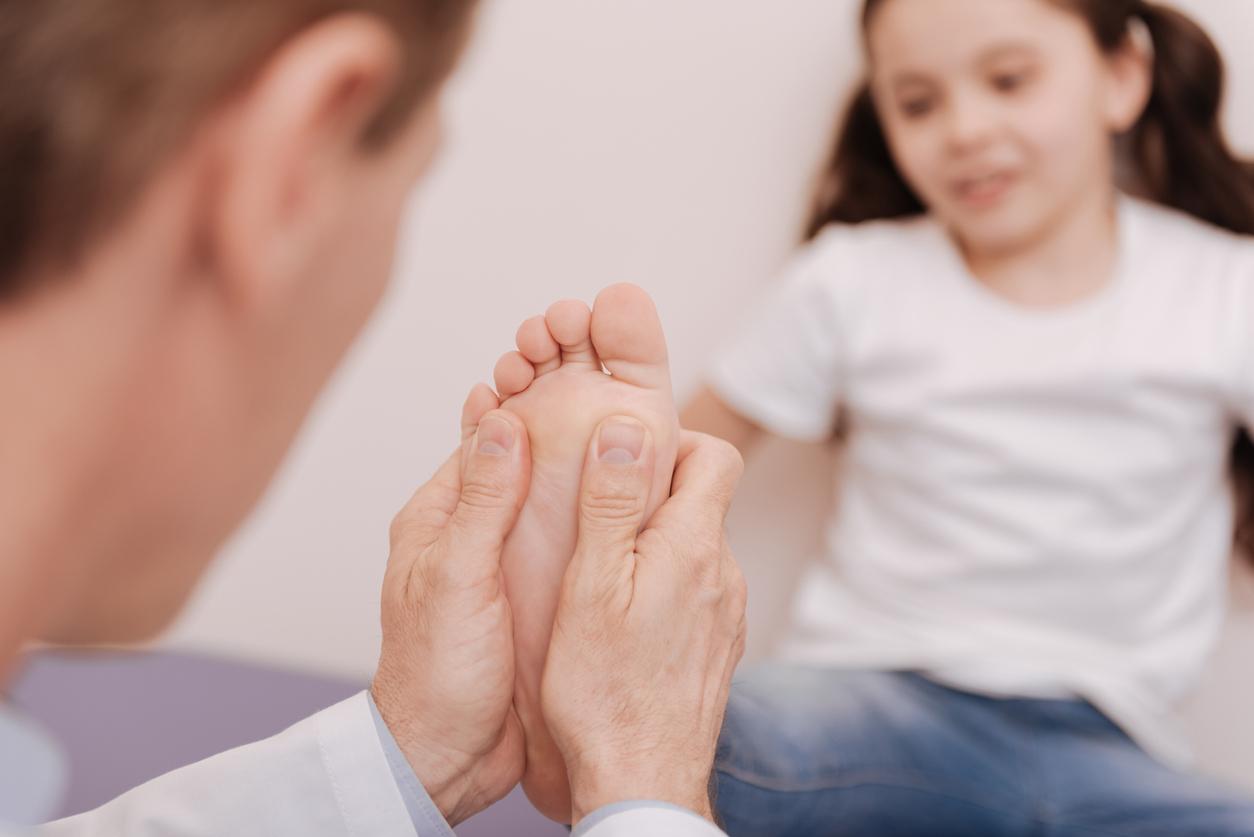New outdoor activities are unfortunately often synonymous with blisters on the feet. Where do they come from? How to prevent and treat them? A podiatrist member of the French Union for foot health answers us.

- To avoid them, it is necessary to limit the wearing of new shoes or to apply an anti-heating cream to avoid friction. Otherwise, you have to practice physical activity all year round so as not to have blisters due to too intense an effort.
- Pierce or clean a blister, disinfect it and protect it with a suitable dressing. Treat this innocuous wound as quickly as possible to prevent it from becoming infected.
Coming back from a long hike with blisters on your feet? These bulbs never happen by chance and can ruin your vacation. To avoid this inconvenience, podiatrist Muriel Montenvert, secretary general of the French Union for foot health, agreed to answer our questions.
How to cure a blister?
You should know that a blister is the result of a short and intense friction on an isolated part of the skin. This rubbing releases an interstitial liquid which peels off the last layer of the epidermis – the most superficial – and gives it a bubbly appearance. It is a defense mechanism of the skin that protects it and prevents it from ulcerating. If the friction is longer and less intense, it forms horn.
If the blister is bullous, it should be gently pierced with tweezers or nail clippers that have been disinfected beforehand, and extract the liquid. It is then necessary to disinfect and apply a hydrocolloid type dressing on it to isolate the wound and help it heal. Small tip: with this type of dressing, it is advisable to heat them in your hands before removing the tabs and applying it. Warmed up, the dressing becomes more flexible and thus adheres better to the skin area. This type of dressing is water resistant. The blister should heal after 3 or 4 days.
If the blister is no longer bullous, it is because it has burst and is leaving the dermis raw. It is then necessary to cut the shreds of flesh and not to tear them off at the risk of damaging the skin even more. It is then necessary to use an antiseptic as well as a drying agent and then cover with a hydrocolloid dressing.
Shouldn’t a bulb be left exposed?
It depends on your tolerance and activity. If you don’t have to walk a lot, you can just disinfect and apply a dry bandage.
How to avoid them?
There are two main families of light bulbs. One is caused by the use of new shoes. We all have shoes that hurt us and we know they will cause blisters. We can wear them until it hurts us then take them off, apply a cream or a bandage on the irritation. Otherwise, it is also possible to first apply a cream to the problematic area, such as the heel, so that the shoe slides on the cream and does not attack the skin too much. Otherwise, you never go hiking or at the start of a marathon with new shoes! They must always be used beforehand so that the shoes adapt to the physiology of your foot, or you risk having blisters.
However, you have to know how to choose your shoes: you choose them with your feet and not with your eyes! If a pair hurts you in the store, it will hurt you all the time. When you choose them, take the appropriate socks with you and avoid wearing barefoot closed shoes. Then, take the right shoes according to the right use: do not go hiking in flip-flops, these shoes are not made for walking.
Yet it is possible to have blisters in old shoes…
The other large family of blisters is caused by excessive physical activity: if the foot is not used to it or prepared, blisters will appear. In the summer, this frequently happens to casual hikers, runners, or walkers. To avoid this, they should have physical activity the rest of the year. To reduce this sport-related friction, there are anti-heating ointments: they do not penetrate the skin and leave fat in order to transform friction into slips.
How do we know if a hike will be too strenuous for us?
There is no rule. The appearance of blisters is more or less frequent depending on the quality of the skin. If you have fragile, very fine skin or are afraid of having it: anticipate! Apply an anti-friction cream before going for a walk.
A blister is a harmless wound, in what cases can it become dangerous?
The severity of a blister is related to its extent. In extreme cases – like the Paris-Colmar athletic race where in 2014 walkers traveled 426 km in a few days – the blister can take up the entire surface of the foot.
Generally speaking, if you notice redness all around the blister, if it gives off heat, turns yellow, and/or leaks pus, that’s a bad sign. When you have a blister, you have to take care of it without taking it lightly, it must be treated and disinfected quickly. Poor care is a gateway to infections.
.

















